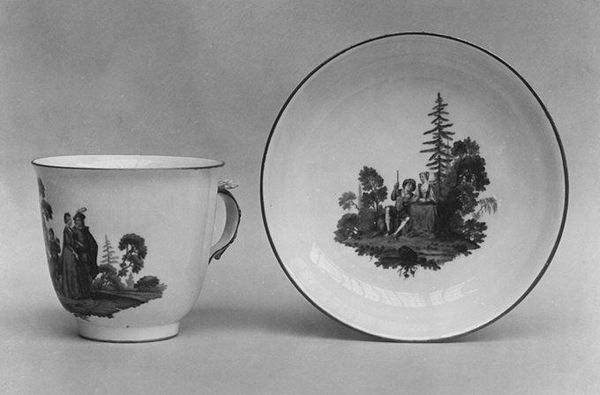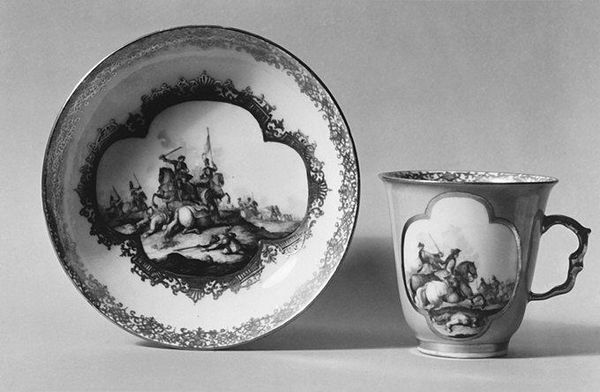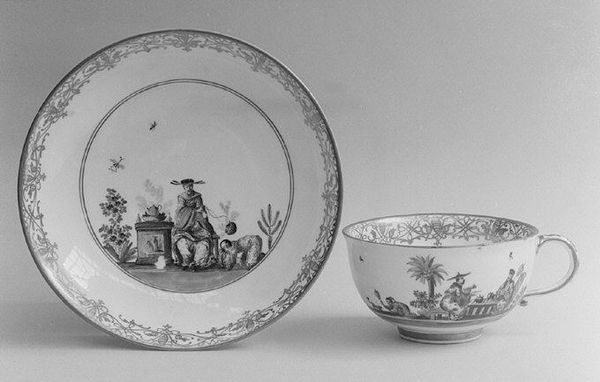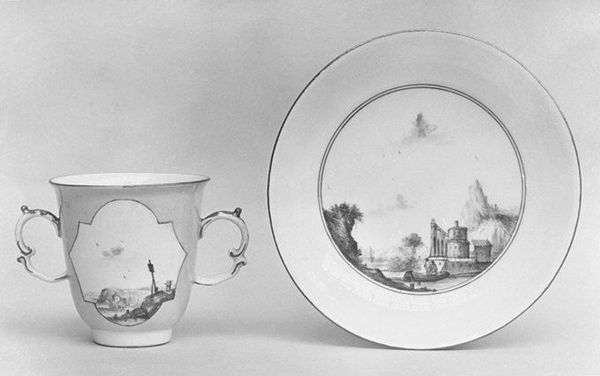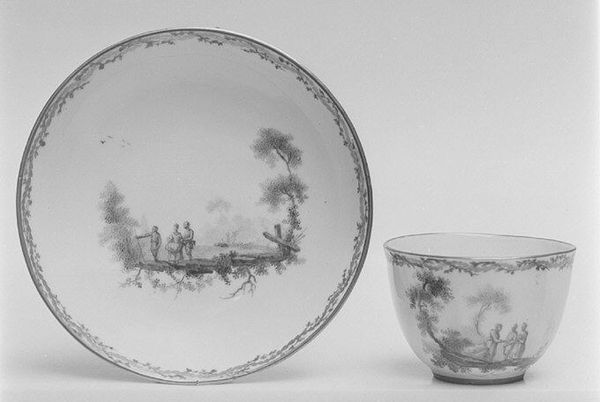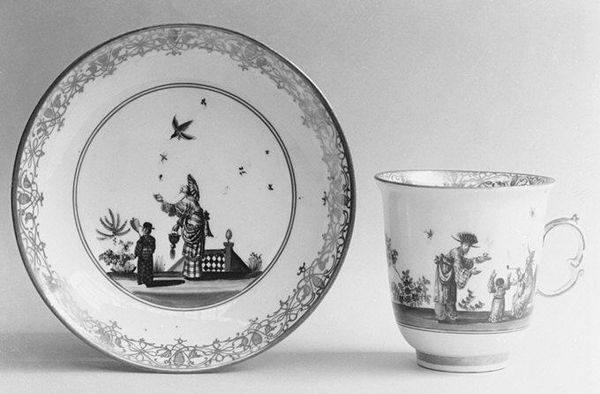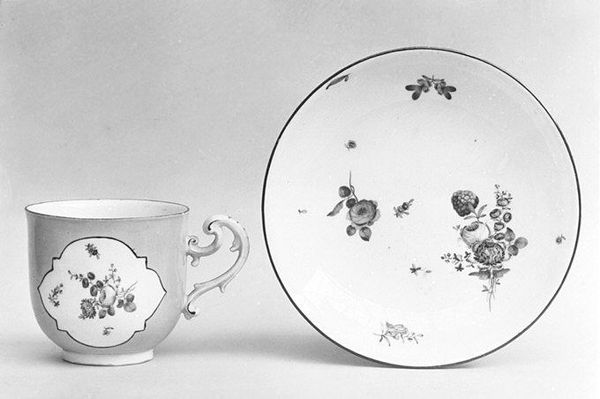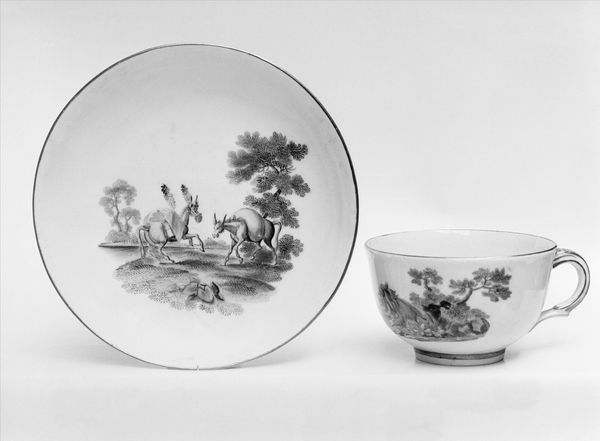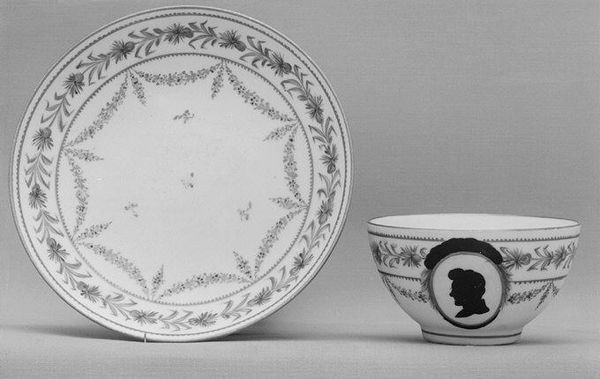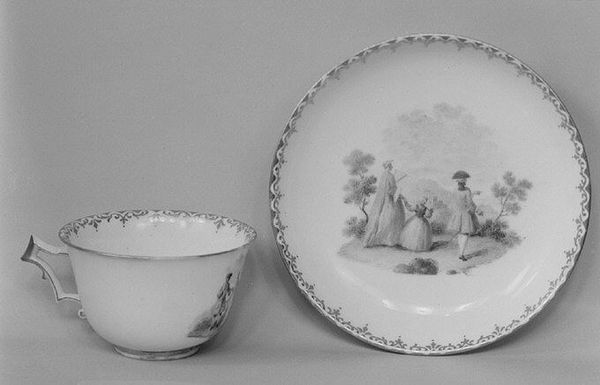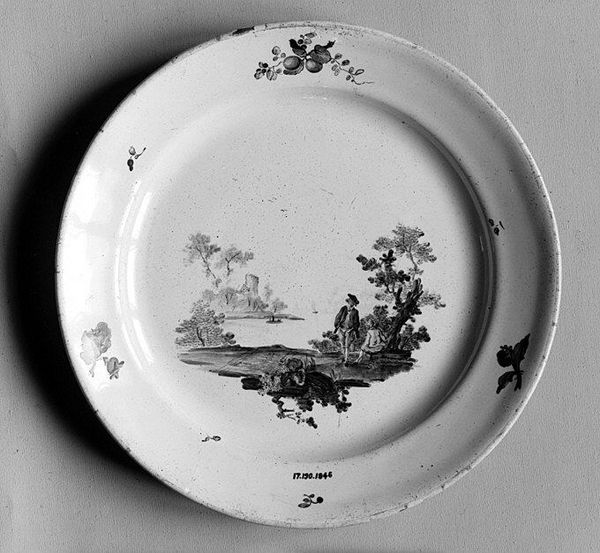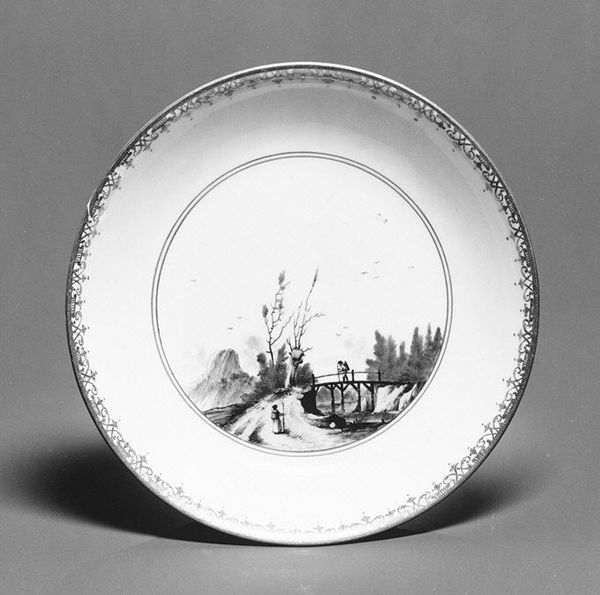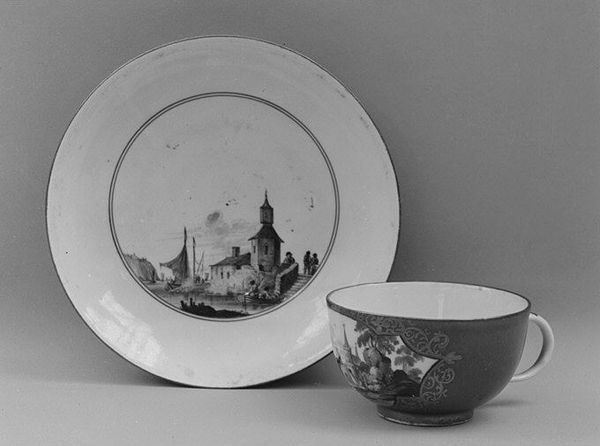
painting, ceramic, porcelain, sculpture
#
portrait
#
painting
#
ceramic
#
flower
#
porcelain
#
sculpture
#
decorative-art
#
rococo
Dimensions: Height (cup .171): 2 5/8 in. (6.7 cm); Diameter (saucer .172): 4 3/4 in. (12.1 cm)
Copyright: Public Domain
Editor: Here we have a Meissen porcelain cup and saucer from 1730 to 1740. What strikes me is the contrast between the delicacy of the porcelain and the realistic depictions of the dog; it feels quite grounded. What stands out to you? Curator: I'm immediately drawn to the manufacturing process and the social context that enabled such a piece. Think about the raw materials - the kaolin clay sourced and processed, the pigments for the painting, and the fuel for the kiln. All required specific technologies, labour, and trade networks. This wasn't simply an aesthetic object; it represents a sophisticated economic system. Editor: So, you’re focusing on the material processes rather than just the appearance? Curator: Exactly. The very existence of this cup and saucer points to the rise of a wealthy elite and their consumption habits. The depiction of a domestic animal raises questions of class and ownership. Was this a custom order, portraying a beloved pet? Or a more generalized symbol of status? These porcelains helped the rising middle classes imitate the manners of aristocracy and often depicted scenes that spoke to new class fantasies and pastimes. What stories do you imagine that cup holding? Editor: I hadn’t thought about it that way, more as a decorative object than a signifier of societal structures. The connection to class and consumption is fascinating. Curator: Considering the division of labor – the specialized skills of the potter, the painter, the kiln operator – allows us to view the cup not just as a beautiful thing, but as a testament to evolving modes of production. How did this artisanal production contribute to broader economic and social shifts? Editor: It’s definitely made me reconsider the value we place on these objects. I’ll certainly look at porcelain differently from now on. Curator: Indeed. Recognizing art objects as products of their specific material and economic circumstances expands our understanding beyond aesthetics. It compels us to see art as an active agent within history.
Comments
No comments
Be the first to comment and join the conversation on the ultimate creative platform.
